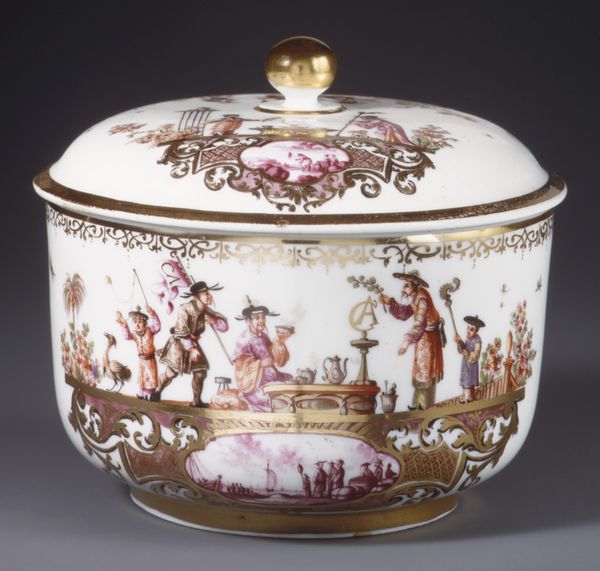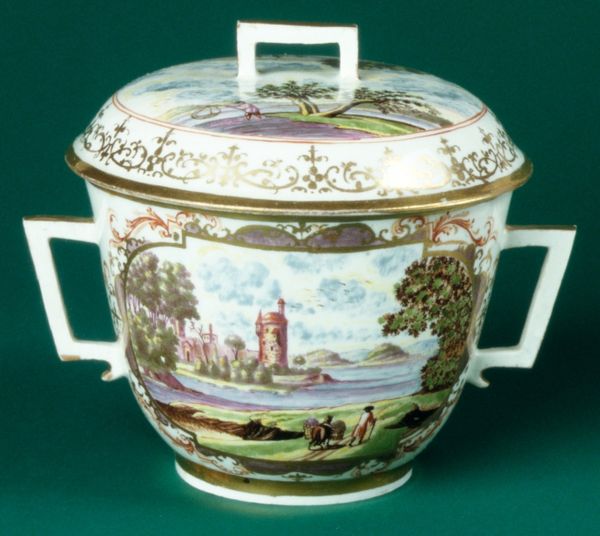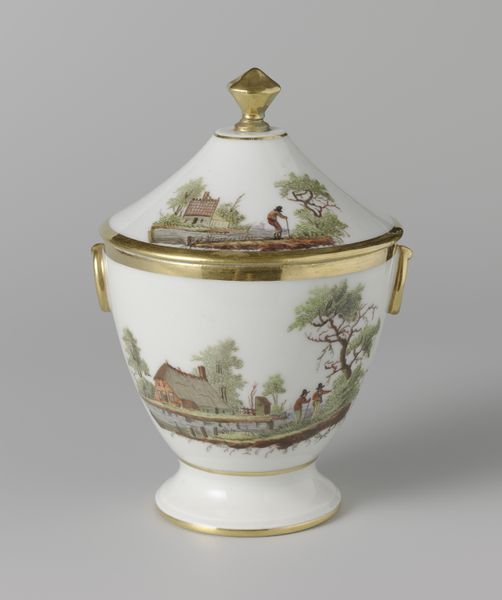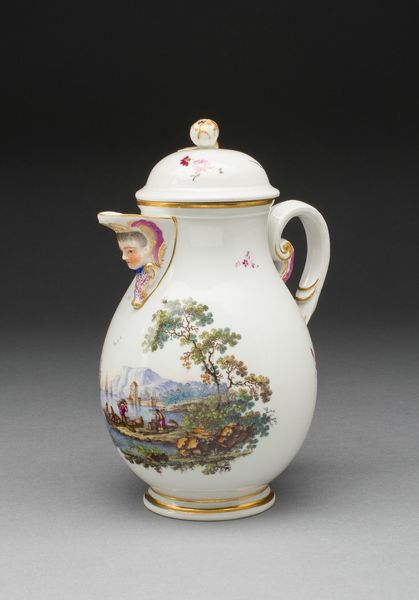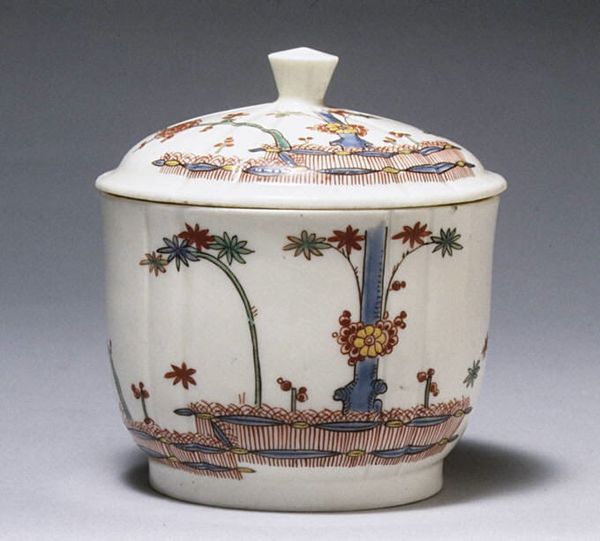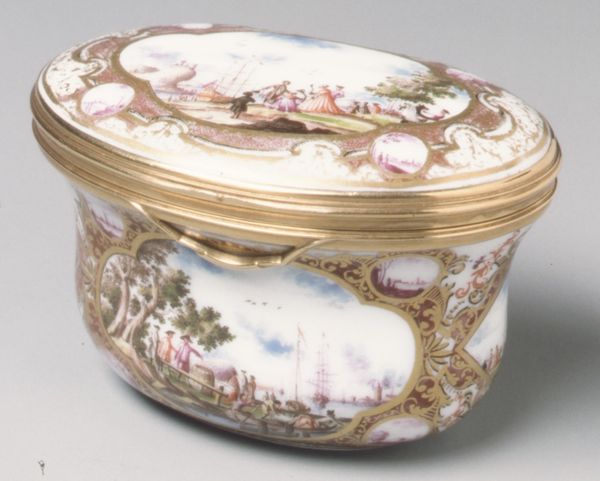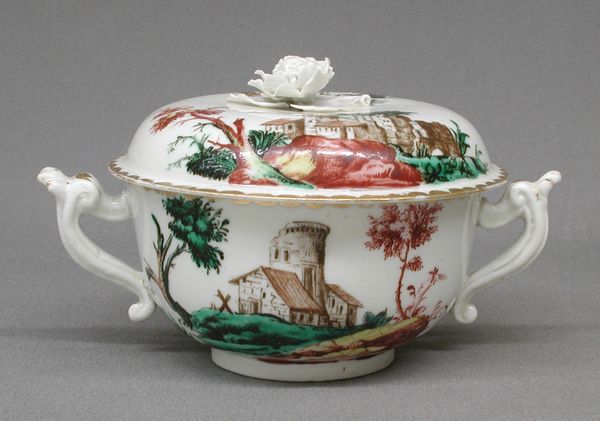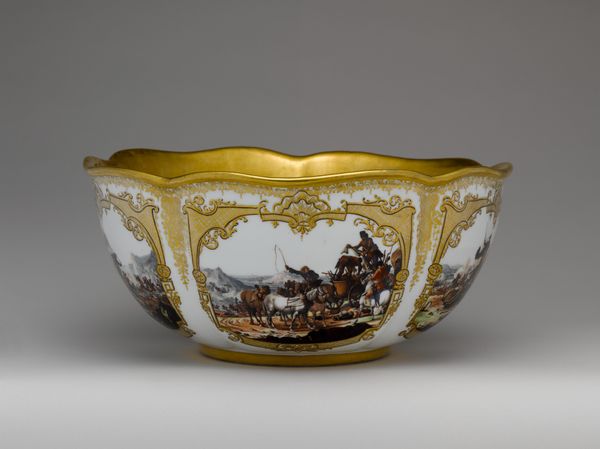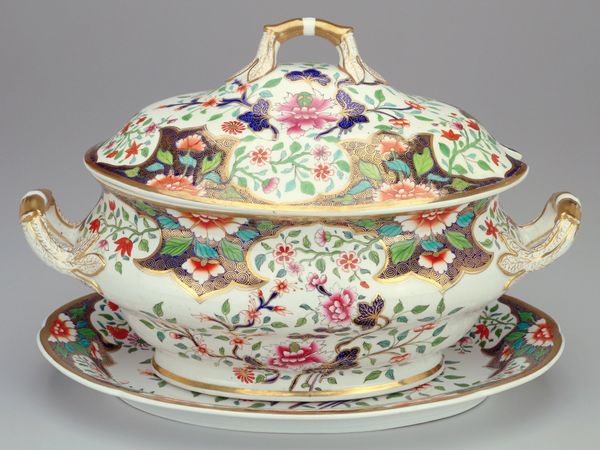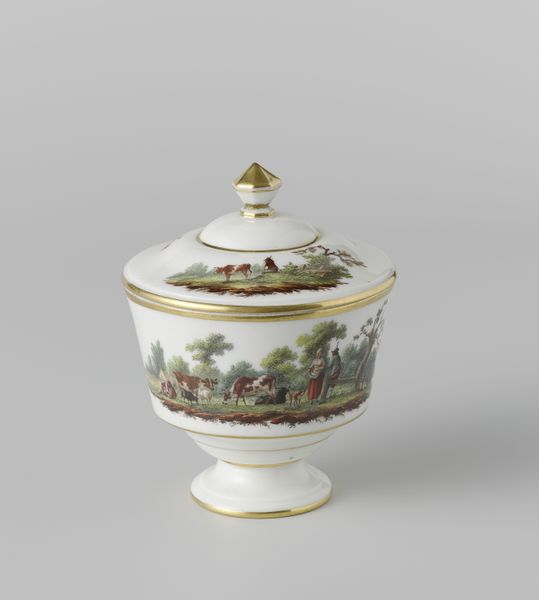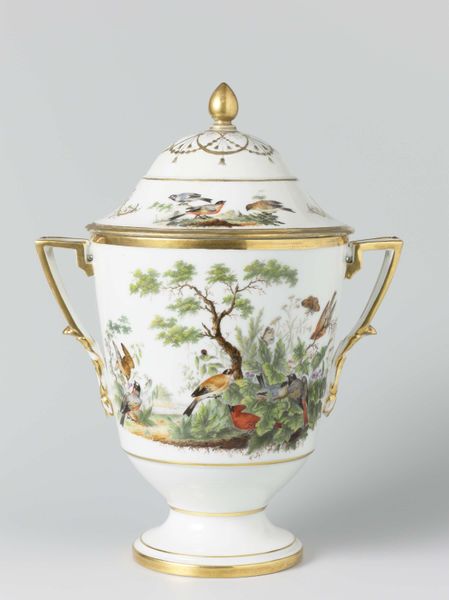
Sugar bowl with cover (part of a service) 18th century
0:00
0:00
ceramic, porcelain, pendant
#
landscape
#
ceramic
#
jewelry design
#
porcelain
#
ceramic
#
genre-painting
#
decorative-art
#
rococo
#
pendant
Dimensions: 4 1/4 × 4 1/8 in. (10.8 × 10.5 cm)
Copyright: Public Domain
Editor: Here we have an 18th-century porcelain sugar bowl with a lid, crafted by the Meissen Manufactory. I am fascinated by how detailed the genre paintings are, particularly rendered on porcelain. What's your take on this piece? Curator: This sugar bowl transcends mere function. Look closely at the porcelain itself; its creation demanded skilled labor and access to specific materials. Meissen porcelain, sought after then as now, represented not just wealth, but technological advancement, the mastery of turning base materials into precious objects through specialized labor. Editor: I see your point. It wasn’t just about having something pretty, but about demonstrating technical skill and access to global resources. The little pastoral scene seems almost secondary. Curator: Exactly. How does the decoration interact with the form, or perhaps even, disguise the intensive manufacturing process required? Rococo decorative arts often served this purpose for aristocratic patrons, obscuring production with idealized landscapes. Consider the social implications of consuming sugar at the time—its connection to colonization and forced labor. Does the picturesque imagery further sanitize these darker realities? Editor: That makes me think about the intended consumer too. They probably weren't considering where the sugar actually came from, or who produced it. It’s quite a contrast to the idyllic scenes depicted on the bowl. Curator: Precisely. And think about the stages of creation—the mining of the kaolin, the transportation, the highly skilled labor of the painters, the firing process. How is all of this labor and industrial process ultimately subsumed and yet, at the same time, highlighted, by this “simple” object? Editor: It is a pretty effective blurring of the lines between art, craft, industry and, frankly, exploitation. I’ll definitely look at decorative arts differently now, considering their role in the broader political economy. Curator: A closer look at the materials and making broadens the narratives and questions we pose to works like these.
Comments
No comments
Be the first to comment and join the conversation on the ultimate creative platform.
